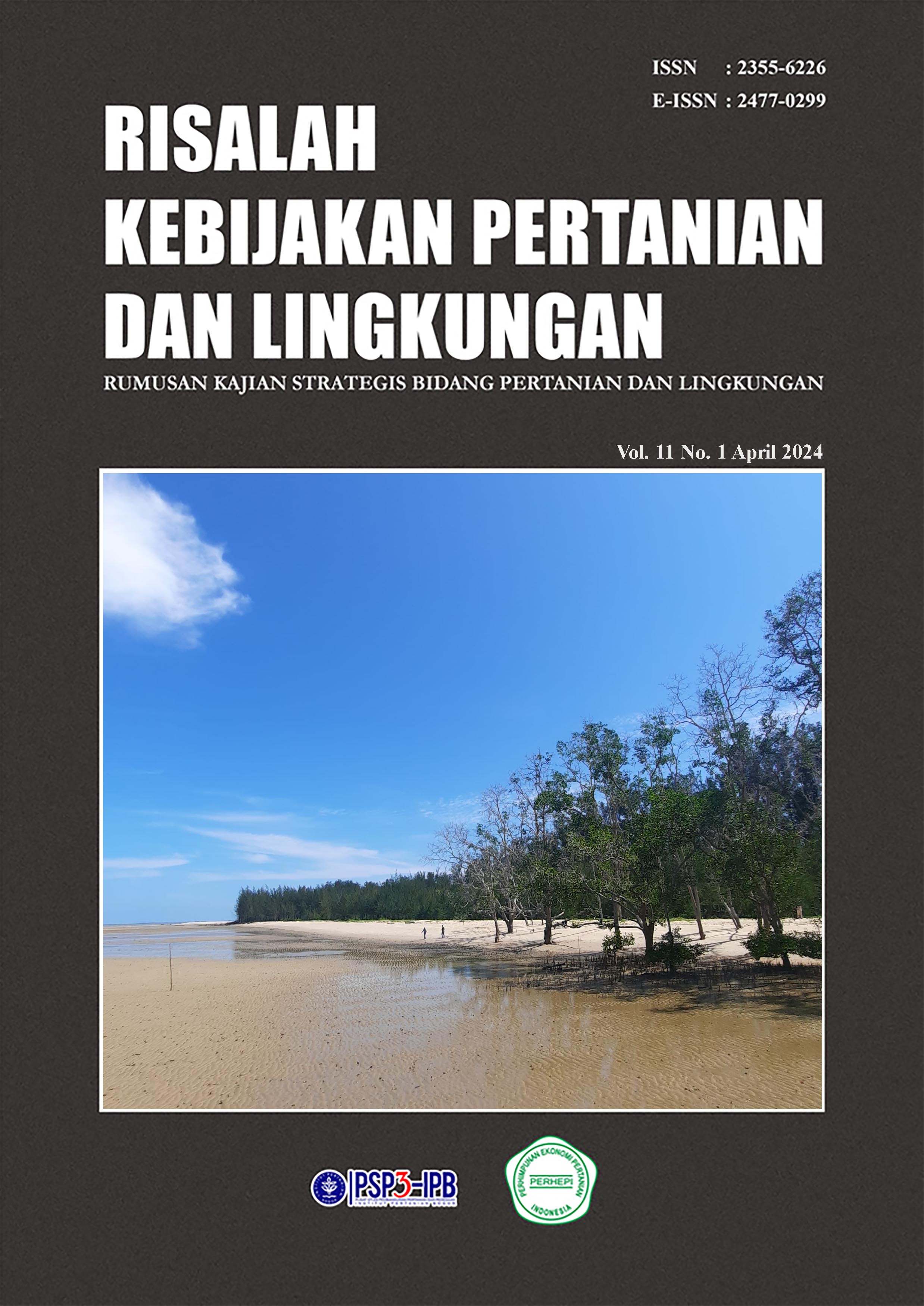TEKNOLOGI REKLAMASI LAHAN BEKAS TAMBANG BAUKSIT MENGGUNAKAN SEEDBALL TANAMAN ADAPTIF DAN KOMPOS DIPERKAYA FABA
Abstract
Bauxite is one of the most mined minerals in the world and plays an important role as a raw material for aluminum production. The implementation of bauxite downstream policy has an impact on the expansion of bauxite mining area and bauxite post-mining land. The expansion of mining activities can cause an increase in the impact of environmental damage, one of which is the emergence of critical land in post-mining areas. Bauxite post-mining land often experiences problems with soil physical and chemical properties, which cause soil unable to support growth and fulfill plant nutrition needs. Alternatives that can be implemented is the use of adaptive plant seedball and Fly Ash-Bottom Ash (FABA) enriched compost utilization as ameliorant material. Post-mining land reclamation technology is the key to achieve successful reclamation and support the optimization of sustainable bauxite downstream programs in Indonesia.
Metrics
Downloads
References
Aprillia, R., Mukhtar, W., Setiawati, S., Asbanu, G. C. 2021. Karakteristik tanah bekas tambang bauksit dan tailing di Kabupaten Sanggau, Kalimantan Barat. Jurnal Pendidikan Informatika Dan Sains, 10(2), 208–217. https://doi.org/10.31571/saintek.v10i2.3500.
Ardiyanti, S. T., Amaliah, S., Pratiwi, R. A., Gunadi, D. 2023. Potensi dampak kebijakan larangan ekspor mineral logam. Trade Policy Journal, 2(1), 53–64.
[BPSI] Balai Pengujian Standar Instrumen Tanah dan Pupuk. 2023. Petunjuk Teknis: Analisis Kimia Tanah, Tanaman, Air, dan Pupuk. (3rded.). Bogor: Balai Penelitian Tanah.
Dibattista, I., Camara, A. R., Molderez, I., Benassai, E. M., Palozza, F. 2023. Socio-environmental impact of mining activities in Guinea: The case of bauxite extraction in the region of Boké. Journal of Cleaner Production, 387, 135720. https://doi.org/10.1016/j.jclepro.2022.135720.
Fachlevi, T.A., Putri, E.I.K., Simanjuntak, S.M. 2016. Dampak dan evaluasi kebijakan pertambangan batubara di Kecamatan Mereubo. Risalah Kebijakan Pertanian dan Lingkungan Rumusan Kajian Strategis Bidang Pertanian dan Lingkungan, 2(2), 170-179. https://journal.ipb.ac.id/index.php/jkebijakan/article/view/10989.
Faoziah, N., Iskandar, Djajakirana, G. 2022. Pengaruh penambahan kompos kotoran sapi dan FABA terhadap karakteristik kimia pada tanah berpasir dan pertumbuhan tanaman tomat: Jurnal Ilmu Tanah dan Lingkungan, 24(1), 1-5. https://doi.org/10.29244/jitl.24.1.1-5.
Hakim, S. S., Santosa, P. B., Alimah, D. 2015. Perbandingan sifat fisis seedball aeroseeding dari beberapa formula pembentuk serta ketebalan seedball. Galam, 1(2), 31–36.
Hartoyo, A. P. P., Rahmadhani, K., Syahira, T. N., Kusuma, R. A., Astuti, N. J., Maulana, D., Muhammad, D. N. 2023. Aplikasi seedballs untuk pertumbuhan benih Nangka (Artocarpus heterophyllus), Bisbul (Diospyros blancoi), dan Merbau (Intsia bijuga). Journal of Tropical Silviculture, 14(2), 106-113. https://doi.org/10.29244/j-siltrop.14.02.106-113.
Hendrik, Fauzi, A., Widiatmaka, Suryaningtyas, D. T., Firdiyono, F. 2022a. Determine alternatives environmental sustainability of bauxite downstream industry management through integration MICMAC - ANP method: A case study of Ketapang Industrial Area, Ketapang Regency, West Kalimantan Province. IOP Conference Series: Earth and Environmental Science, 1109(1), 012037. https://doi.org/10.1088/1755-1315/1109/1/012037.
Hendrik, Fauzi, A., Widiatmaka, Suryaningtyas, D. T., Firdiyono, F. 2022b. Qualitative data envelopment assessment of different alumina refinery plants: The case of bauxite mining in West Kalimantan Province. IOP Conference Series: Earth and Environmental Science, 950(1), 012018. https://doi.org/10.1088/1755-1315/950/1/012018.
Ika, S. 2017. Kebijakan hilirisasi mineral: Policy reform untuk meningkatkan penerimaan negara. Kajian Ekonomi dan Keuangan, 1(1), 41-67. https://doi.org/10.31685/kek.v1i1.259.
Iskandar, I., Suryaningtyas, D. T., Baskoro, D. P. T., Budi, S. W., Gozali, I., Suryanto, A., Kirmi, H., Dultz, S. 2022. Revegetation as a driver of chemical and physical soil property changes in a post-mining landscape of East Kalimantan: A chronosequence study. CATENA, 215, 106355. https://doi.org/10.1016/j.catena.2022.106355.
Iskandar, Suwardi. 2009. Meningkatkan keberhasilan reklamasi lahan bekas tambang. Prosiding, Seminar Nasional Pengelolaan Lingkungan Pertambangan yang diselenggarakan oleh Lembaga Penelitian Universitas Sriwijaya tanggal 21-22 Oktober 2009. Palembang: Universitas Sriwijaya.
Iskandar, Suwardi, Ramadina, E. F. R. 2008. Pemanfaatan bahan amelioran abu terbang pada lingkungan tanah gambut: Pelepasan hara makro. Jurnal Tanah Indonesia, 1 (1), 1–6.
Iskandar, Suwardi, Suryaningtyas, D. T. 2012. Reklamasi lahan-lahan bekas tambang: Beberapa permasalahan terkait sifat-sifat tanah dan solusinya. Prosiding, Seminar Nasional Topik Khusus: Teknologi Pemupukan dan Pemulihan Lahan Terdegradasi yang diselenggarakan oleh Badan Penelitian dan Pengembangan Pertanian tanggal 29-30 Juni 2012. Bogor: Badan Penelitian dan Pengembangan Pertanian.
Kannan, R., Dhivya, V., Janani, T. S. K. 2021. Future perspective of seed ball technology for creating new ecosystem. International Journal of Plant and Environment, 7(4), 293-296. https://doi.org/10.18811/ijpen.v7i04.9.
Kementerian ESDM. 2020. Peluang Investasi Bauksit Indonesia. Jakarta: Kementerian Energi dan Sumber Daya Mineral.
Lestari, K. G., Budi, S. W., Suryaningtyas, D. T. 2022. The impact of revegetation activities in various post-mining lands in Indonesia (study of literature). IOP Conference Series: Earth and Environmental Science, 959(1), 012038. https://doi.org/10.1088/1755-1315/959/1/012038.
Maga, L., Ismail, A., Falatehan, A.F.F. 2018. Merumuskan kebijakan dalam mengatasi kerusakan lingkungan akibat aktivitas tambang nikel di Kecamatan Tinanggea Kabupaten Konawe Selatan. Risalah Kebijakan Pertanian dan Lingkungan Rumusan Kajian Strategis Bidang Pertanian dan Lingkungan, 4(2), 125-142. https://journal.ipb.ac.id/index.php/jkebijakan/article/view/22031.
Mosyaftiani, A., Kaswanto, R.L., Arifin, H.S. 2018. Potensi tumbuhan liar di sempadan terbangun Sungai Ciliwung di Kota Bogor sebagai Upaya Restorasi Ekosistem Sungai. Risalah Kebijakan Pertanian dan Lingkungan Rumusan Kajian Strategis Bidang Pertanian dan Lingkungan, 5(1), 1-13. https://doi.org/10.29244/jkebijakan.v5i1.29781.
Oklima, A. M., Sudarsono, Iskandar, Suryaningtyas, D. T. 2015. Utilizing coal ash and humic substances as soil ameliorant on reclaimed post-mining land. Journal of Tropical Soils, 19(3), 161-169. https://doi.org/10.5400/ jts.2014.v19i3.161-169.
Prematuri, R., Turjaman, M., Sato, T., Tawaraya, K. 2020. Post bauxite mining land soil characteristics and its effects on the growth of Falcataria moluccana (Miq.) Barneby & J. W. Grimes and Albizia saman (Jacq.) Merr. Applied and Environmental Soil Science, 2020, 1-8. https://doi.org/10.1155/2020/6764380.
Putri, A., Iskandar, I., Oktariani, P., Limin, A. 2023. Effect of coal ash enriched compost on soil chemical properties of ultisols. IOP Conference Series: Earth and Environmental Science, 1266(1), 012076. https://doi.org/10.1088/1755-1315/1266/1/012076.
Sembiring, S. 2008. Sifat kimia dan fisik tanah pada areal bekas tambang bauksit di Pulau Bintan, Riau. Info Hutan, 5(2), 123–134.
Setyowati, R. D. N., Amala, N. A., Aini, N. N. U. 2017. Studi pemilihan tanaman revegetasi untuk keberhasilan reklamasi lahan bekas tambang. Al-Ard: Jurnal Teknik Lingkungan, 3(1), 14-20. https://doi.org/10.29080/alard.v3i1.256.
Siombo, M. R. 2023. Kajian hukum hilirisasi dan penghentian ekspor mineral logam. JISIP (Jurnal Ilmu Sosial dan Pendidikan), 7(2), 1384-1391. https://doi.org/10.58258/jisip.v7i2.4915.
Sittadewi, E. H. 2016. Mitigasi lahan terdegradasi akibat penambangan melalui revegetasi. Jurnal Sains dan Teknologi Mitigasi Bencana, 11(2), 50-60. https://doi.org/10.29122/jstmb.v11i2.3690.
Sriningsih, W., Iskandar, Suryaningtyas, D. T. 2022. Utilizing fine coal waste as a topsoil substitute on mine reclamation. Journal of Degraded and Mining Lands Management, 9(4), 3595–3603. https://doi.org/10.15243/jdmlm.2022.094.3595.
Sunardi, Kaswanto, R.L., Sjaf, S. 2020. Relationship between plant biodiversity and carbon stock in rural area of Cisadane Watershed. Jurnal Ilmu Lingkungan, 18(3), 610-616.
Suwardi, Randrikasari, O. 2023. Teknologi reklamasi lahan bekas tambang nikel untuk mempercepat keberhasilan reklamasi. Risalah Kebijakan Pertanian dan Lingkungan Rumusan Kajian Strategis Bidang Pertanian dan Lingkungan, 10(3), 145-164. https://doi.org/10.29244/jkebijakan.v10i3.50866.
[USGS] U.S. Geological Survey. 2023. Mineral Commodity Summaries | Bauxite and Alumina Statistics and Information. United States of America: U.S. Geological Survey.
Wardianingsih, R., Riyono, T. 2023. Pelarangan Ekspor Bauksit Tahun 2023: Mampukah Pemerintah Hilirisasi Bauksit?. (4thed.). Jakarta: Pusat Kajian Anggaran - Badan Keahlian Setjen DPR RI.
Wasis, B., Arifin, Winata, B. 2018. Impact of bauxite mine to natural forest biomass and soil properties in Kas Island, Riau Island Province in Indonesia. Archives of Agriculture and Environmental Science, 3(3), 264–269. https://doi.org/10.26832/24566632.2018.030309.
Widodo, K. H., Kusuma, Z. 2018. Pengaruh kompos terhadap sifat fisik tanah dan pertumbuhan tanaman jagung di Inceptisol. Jurnal Tanah dan Sumberdaya Lahan, 5(2), 959-967.
Copyright (c) 2024 RISALAH KEBIJAKAN PERTANIAN DAN LINGKUNGAN: Rumusan Kajian Strategis Bidang Pertanian dan Lingkungan

This work is licensed under a Creative Commons Attribution 4.0 International License.
PUBLICATION ETHICS
Jurnal Risalah Kebijakan Pembangunan Pertanian dan Lingkungan (JRKPL) is a peer-reviewed journal publishing original research to develop a coherent and respected network of landscape architecture knowledge. JRKPL committed to upholding the highest standards of publication ethics that clarifies ethical behavior of all parties involved in publishing a scientific article in JRKPL.
As publisher of JRKPL, PSP3-LPPM IPB and PERHEPI takes its duties of guardianship all stages of publishing process and we recognize our ethical and other responsibilities.
Duties of Authors
An author should not publish manuscripts describing essentially the same research in more than one journal or primary publication. Submitting the same manuscript to more than one journal is unacceptable and constitutes unethical publishing behavior. In general, an author should not submit for consideration in another journal a previously published paper.
Authorship should be limited to those who have made a significant contribution to the manuscript and should be listed as co-authors. Where there are others who have participated in certain substantive aspects of the research project, they should be acknowledged as contributors. The corresponding author should ensure that all co-authors have seen and approved the final version of the paper and have agreed to its submission for publication.
The authors should ensure that they have written entirely original works, and if the authors have used the work and/or words of others, that this has been appropriately cited or quoted. Plagiarism are include passing off another paper as the author own paper, copying or paraphrasing substantial parts of another paper (without attribution) and claiming results from research conducted by others. Plagiarism constitutes unethical publishing behavior and is unacceptable. Plagiarism detected works will be banned for further publication procedure.
The authors acknowledge that they have disclosed all and any actual or potential conflicts of interest with their work or partial benefits associated with it. All sources of financial support for the project should be disclosed. Potential conflicts of interest should be disclosed at the earliest stage possible.
Duties of the Editorial Board
Review Process
JRKPL is committed to objective and fair double-blind peer-review to prevent any actual or potential conflict of interests between the editorial and review personnel and the reviewed material. JRKPL chooses reviewers based on their expertise (whose most closely matches the topic of the paper). At least 2 reviewers are invited to evaluate a manuscript. In cases of controversy or disagreement regarding the merits of the work, an additional review will be solicited. The JRKPL editor mediates all interaction between authors and reviewers, and the review results owned by JRKPL.
Publication Decisions
The editor of a peer-reviewed JRKPL is responsible for deciding which of the articles submitted to the journal should be published. The validation of the work in question and its importance to researchers and readers must always drive such decisions. The final decision on article acceptance based on reviewer's opinions, suggestions, and comments. The editor may confer with other editors or reviewers in making this decision.
Fair Play
JRKPL evaluates manuscripts only based on the intellectual content. No race, gender, sexual orientation, religious belief, ethnic origin, citizenship, or political philosophies of the authors are considered in the evaluation process.
Confidentiality
JRKPL assure the confidentially of the manuscripts, actors, and other related information on the publishing process. Only corresponding author, reviewers, potential reviewers, other editorial advisers, and the publisher are allows for the information.
Disclosure
Unpublished materials disclosed in a submitted manuscript must not be used in an editor's own research without the express written consent of the author. Privileged information or ideas obtained through peer review must be kept confidential and not used for personal advantage.
Duties of reviewers
(1) Objectivity: Reviewer should provide written and unbiased feedback to the authors, personal criticism of the author is inappropriate. Reviewer comments should be clearly with supporting arguments indicating whether the writing is concise and relevant
(2) Expertise: Reviewer who feels unqualified to review the research reported in a manuscript or knows that its prompt review will be impossible should notify the editor and excuse himself from the review process.
(3) Acknowledgement of sources: Reviewer suggest relevant published work that has not been cited by the authors to improve the quality of the manuscript,
(4) Confidentiality: Reviewer should maintain the confidentiality of the review process. Privileged information or ideas obtained through peer review must be kept confidential and not used for personal advantage.
(5) Disclosure and conflict of interest: Unpublished materials disclosed in a submitted manuscript must not be used in a reviewer own research without the express written consent of the author. Reviewers should not consider manuscripts in which they have conflicts of interest resulting from competitive, collaborative, or other relationships or connections with any of the authors, companies, or institutions connected to the papers.






















